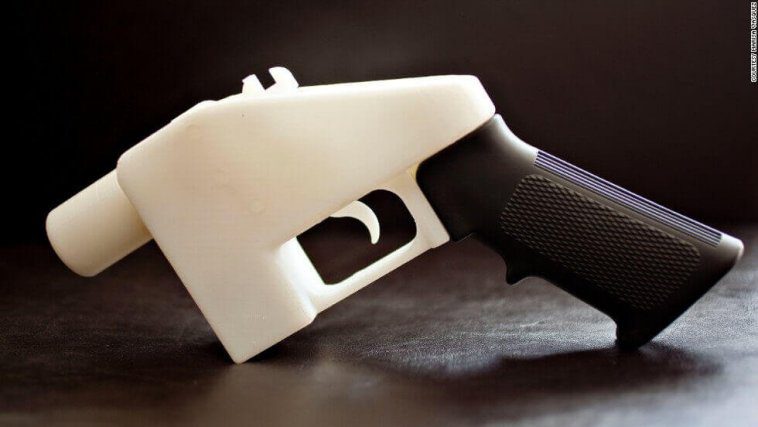Should you fear 3D printed guns? Read our 2018 3D printed gun report to learn about the latest news, laws and actual threats to help you sort facts from fears.
BREAKING NEWS UPDATE (7-12-2018): After taking the U.S. government to court, Cody Wilson and Defense Distributed have reached a settlement that will allow the organization to re-upload 3D printable gun models to their website. Learn more about this potentially landmark decision on All3DP.
Both makers and lawmakers around the world have taken notice of 3D printed guns. Regardless of intention, their efforts to stifle the use of 3D printed firearms have given rise to a number of difficult questions.
Should someone with the files for a 3D printed gun be charged with the same crime as someone that actually has the gun? Has the media sensationalized the rise of 3D printed guns? What’s the best way to regulate 3D printed weapons? And most importantly, should you fear 3D printed guns?
To answer these questions, we will examine the reasons why you should and shouldn’t fear the 3D printed gun, explain the history, and then go over the laws that have been put in place to stop them.
The 3D Printed Gun: All You Need to Know Right Now
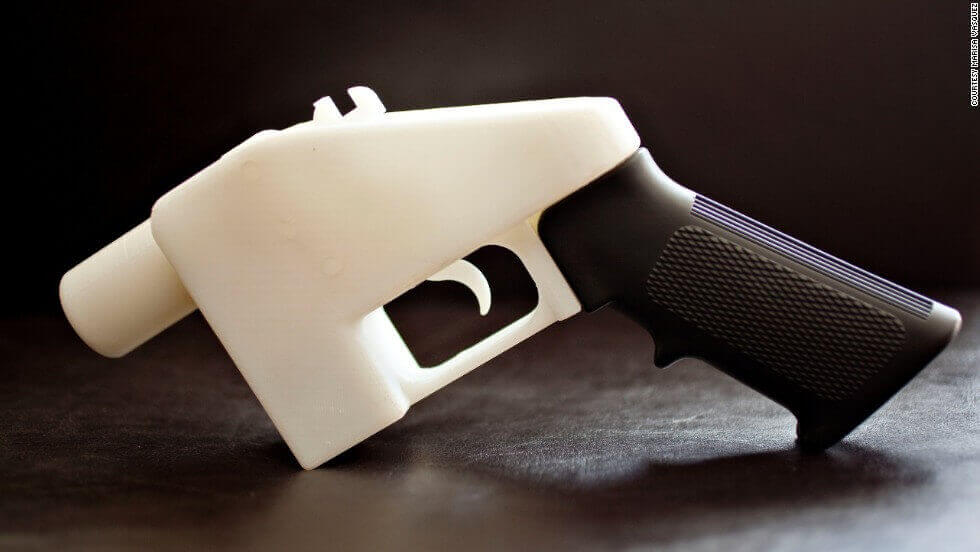
Reasons to Fear & Not to Fear 3D Printed Guns
There are valid arguments for why you should and shouldn’t fear 3D printed guns, making this quite the loaded issue. To offer a fair and balanced view on this controversial topic, we’ll offer reasons on both sides of the 3D printed gun debate to help you decide for yourself.
Why You Should Fear
From CNN to Gizmodo, mainstream media outlets have focused more on 3D printed firearms than any other innovative application of this wide-ranging technology. But where does this fear stem from?
Perhaps what stirs this fear isn’t the functionality of these homemade weapons, but the ease of creating one without anyone knowing. Many states in the U.S. and other countries throughout the world have strict gun control laws. Generally speaking, those who are allowed to own a firearm must have it registered. But with 3D printed guns, people fear that criminals and other unstable people will be able to produce firearms at home and commit crimes with it.
Although the current state of desktop 3D printing doesn’t necessarily allow high-quality firearms to be manufactured at home, this could also change as the technology advances. For instance, as metal 3D printing becomes more affordable and accessible, the potential to create higher-grade weapons could grow.
Another valid fear is that 3D printing could lead to cheap firearm factories for criminals. But again, having a gun 3D printed in metal would cost thousands of dollars, making it more convenient for criminals go to through other illegal channels to find one.
Needless to say, it’s not a 3D printed gun that should be feared. If anything, it’s the idea of being able to manufacture firearms unchecked that really drives this frenzy forward.
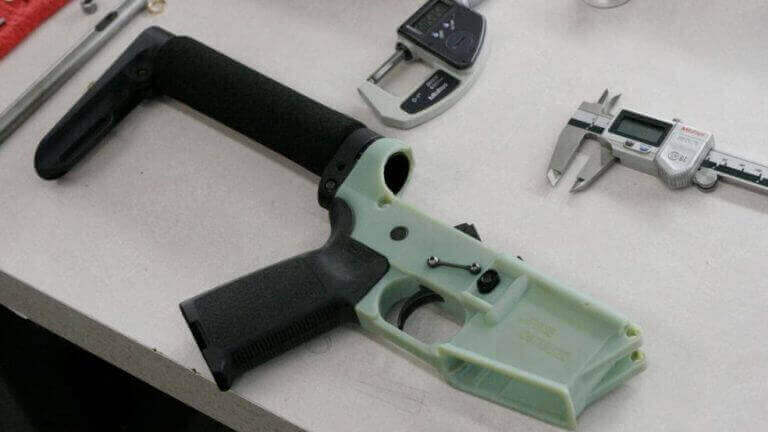
Why You Shouldn’t be Concerned
It’s quite easy to produce a plastic firearm with the proper 3D files and desktop printer. But this homemade 3D printed gun is far from reliable when it comes to functionality. In fact, police testing has proven that a 3D printed gun could endanger the shooter as much as anyone else.
A firearm produced with ABS material could break apart or even potentially explode in the hands of the user when fired. Softer PLA will likely cause the parts to bend or deform after firing.
Realistically, neither ABS or PLA is ideal for producing firearms. While most 3D printed guns are made using ABS, chances are only a single shot will be able to be fired before it either breaks or fails. The reason for this is because the act of firing a bullet simply exerts too much power for most thermoplastics to withstand.
Some gun enthusiasts have created hybrid 3D printed guns, consisting of traditional metal components and thermoplastics. In theory, these firearms should offer much better functionality than an ABS-based weapon. But again, building a hybrid 3D printed gun seems counterproductive to just finding an actual one.
Lastly, metal 3D printing can and has been used to produce a fully functional firearm. There’s no denying this. But, these type of prints are extremely costly, and it makes no sense for a criminal to go to a metal 3D printing service instead of finding a cheaper and more discreet way on the black market.
This also helps to quell the fear that a 3D printed gun would be able to slip through a metal detector, seeing that at least a metal firing pin would be needed to make the makeshift firearm functional. 3D printed guns that are comprised primarily of thermoplastic are extremely ineffective and thus aren’t worth the trouble of manufacturing cases where they will be used in a menacing way.
Essentially, there is no reason to fear a 3D printed gun any more than you would a traditionally manufactured one. In fact, in the United States, actual firearms are easier to get and are much more lethal. There are approximately 300 million firearms spread across the U.S., making the potential 3D printing gun epidemic pretty pointless.
As you will see later in this article, the threat level of a 3D printed gun is much higher in places with strict gun control, especially Australia.
A Brief History of the 3D Printed Gun
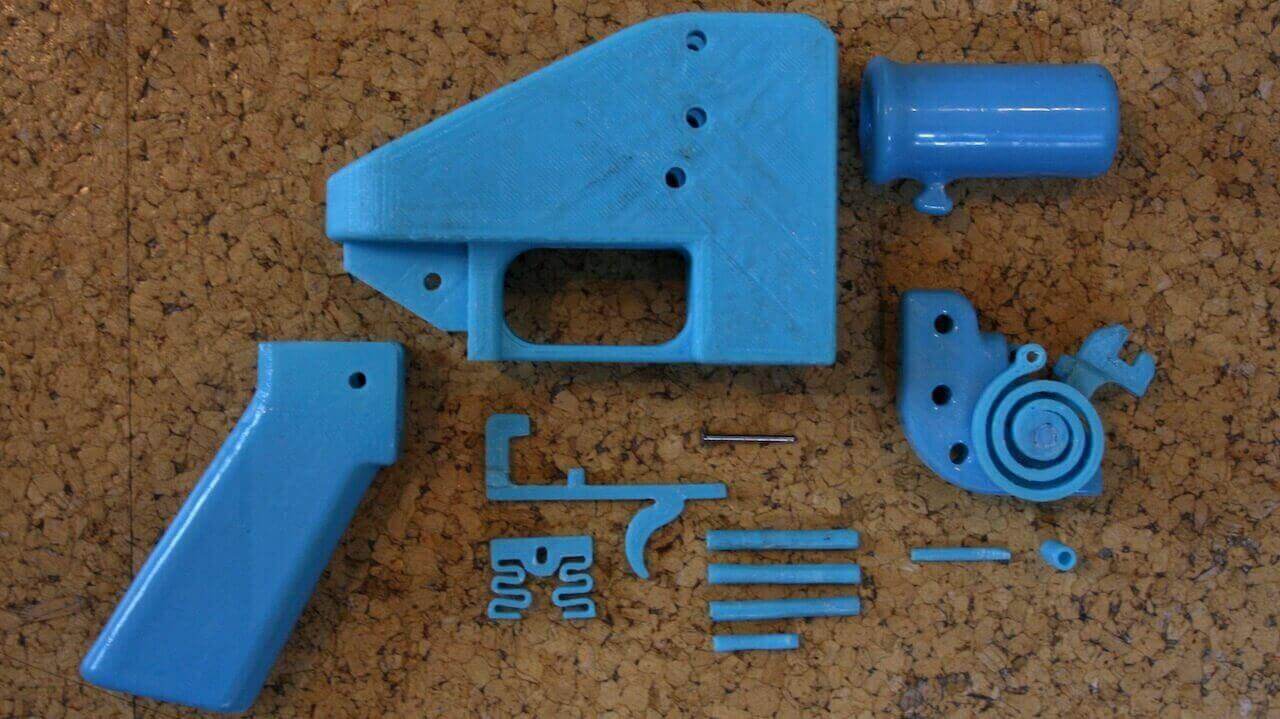
The world’s first functional 3D printed gun was designed back in 2013 by Cody Wilson, a crypto-anarchist and the founder of the Texas open source gunsmith organization Defense Distributed. The 3D files for this one-shot pistol were the first to be released into the world. They sparked an unprecedented controversy that still looms over the 3D printing community to this very day.
After the files for the Liberator were downloaded over 100,000 times in two days, the US Department of State compelled Defense Distributed into taking the model down. This demand has sparked an ongoing legal battle between the techno-anarchist and government.
Most of the 3D printed guns that have surfaced thus far are pistols. But even semi-automatic weapons have been released by Defense Distributed – and confiscated by police.
As 3D printed gun blueprints are distributed by the internet, they have been found across the world, from Australia to Japan, Europe to the Americas. These makeshift firearms have found their way into the hands of police, criminals, and libertarians alike.
Since the release of the Liberator, many government bodies have been scrambling to impose laws that would strictly prohibit 3D printed guns, and in some cases even 3D models of firearms.
Nowadays, additively manufactured weapons remain an unknown threat, but countries like Australia and the United States are not wasting any time in fear-mongering and passing laws.
Most 3D printed guns are based off previously existing designs. Most of them are freely available to download, but also hard to find due to increasing illegality. But when Defense Distributed’s Liberator first hit the scene, it proved that a firearm could be produced almost entirely out of thermoplastic material.
Every component of Wilson’s Liberator was 3D printed except for the metal firing pin and the actual bullet. As you can see in the photo below. The Defense Distributed founder has also created an automatic weapon that is not fully 3D printed but is equipped with additively manufactured components, in the past.
Since then, Wilson has continued on his campaign to put DIY firearms in the spotlight. After his 3D model was forced off the internet, Defense Distributed released the Ghost Gunner, a desktop CNC milling machine designed to manufacture guns. At first, the machine was only capable of producing the lower receiver component for an AR-15. However, Wilson recently upgraded the Ghost Gunner software to make it capable of creating the aluminum frame of a M1911 handgun.
While Wilson believes that he is advocating for gun rights by making firearm production more accessible and undetectable, others have grown worried about this technology getting into the wrong hands. Across the world, countries are passing laws that equate 3D printed guns with traditional firearms. In some places, even having the 3D model for a firearm would be considered possession of an illegal weapon.
Now that we’ve shared a brief history of 3D printed guns with you, let’s take a look at the laws that have been drawn up to prevent people from 3D printing their own firearms.
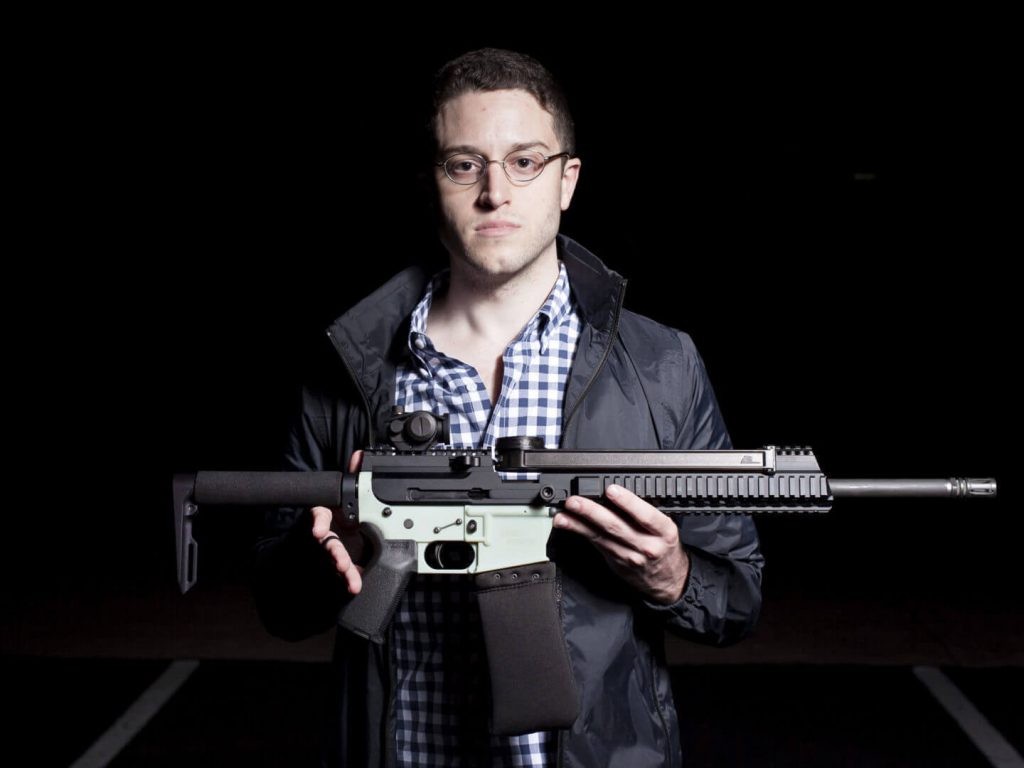
3D Printed Gun Laws in the United States of America
After the Liberator was deemed in violation of the International Traffic in Arms Regulations (ITAR), Wilson filed a federal civil suit against the State Department. To this very day, Wilson is still fighting for his right to publish his 3D printable firearm files.
In September 2016, the United States Court of Appeals for the Fifth Circuit rejected his preliminary injunction request, claiming that national security concerns outweigh Defense Distributed’s First Amendment right to freedom of speech.
Even though the State Department has succeeded to keep 3D gun files illegal in court, Wilson’s design and a handful of others have seeped through the cracks of the internet. There have been a number of instances where 3D printed guns have been confiscated by police the US.
In August 2016, Transportation Security Administration (TSA) at the Reno–Tahoe International Airport found a 3D printed gun and five .22-caliber bullets in a passenger’s carry-on bag. The year prior, two felons in Oregon were caught with an assault rifle that had a 3D printed lower receiver attached to it.
It is illegal under the Undetectable Firearms Act to manufacture any firearm that cannot be detected by a metal detector. 3D printed guns are usually made from PLA or ABS and are therefore not allowed in the US, as legal designs for firearms require a metal plate to be inserted into the printed body.
Some states that allow firearm ownership have taken up the issue of 3D printed gun themselves. For example, California passed a law that requires a 3D printed gun to be properly approved and registered. But with relatively lax gun laws in a number of US states, 3D printed guns have proven to be a more glaring problem in Australia, which has much stricter anti-gun legislation.
But 3D printing isn’t the only manufacturing method being used to create gun parts under the radar. In February 2017, a California man known as “Dr. Death” was arrested and sentenced to three and a half years in prison for using CNC milling to manufacture and sell firearms. This traditionally industrial technology has also become more accessible over the years, and is considerably more of a threat due to its ability to work with metal.
All in all, when it comes to producing or obtaining weapons in an unlawful manner, 3D printing is far from preferable, at least in the current state of the technology. Criminal organizations may look towards 3D printing more often as the technology advances, but for now, most of the fear seems unjustified. At the end of the day, where there’s a will, there’s a way.
3D Printed Gun Laws in Australia
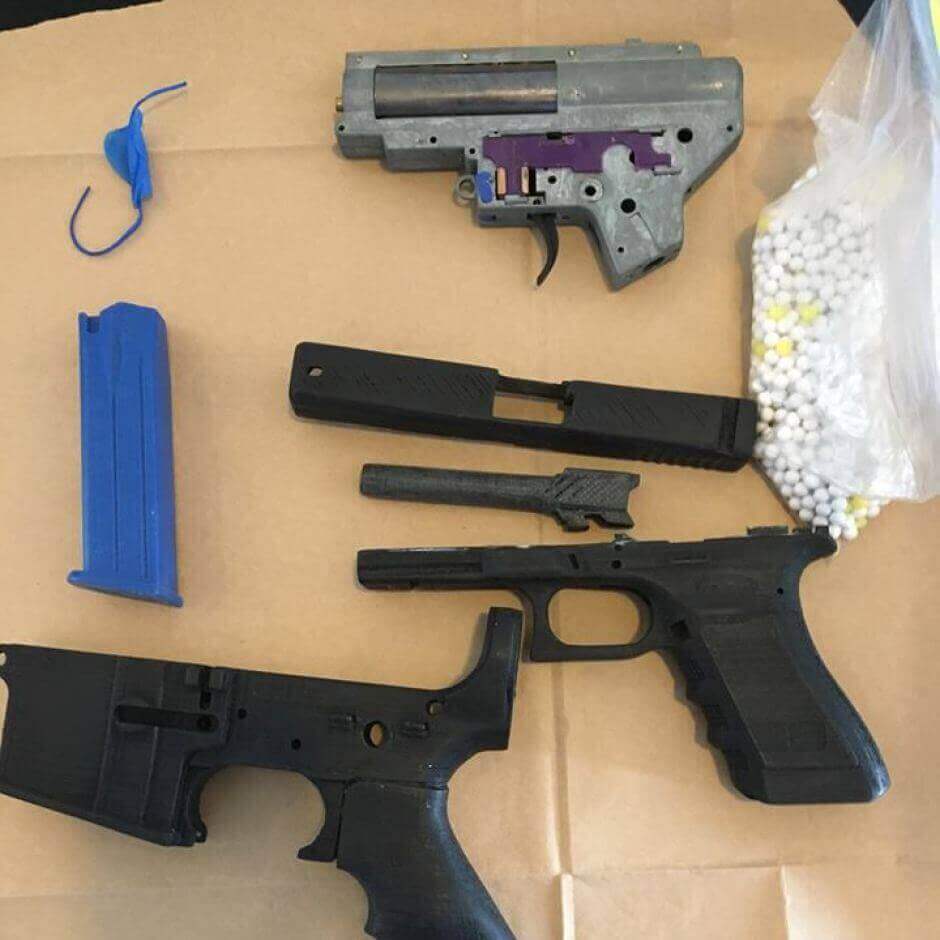
No country has encountered as much legal trouble with 3D printed guns as Australia has. Their strict firearm legislation has limited the access to traditional weapons. So some have turned to 3D printing to help circumvent the law.
In November 2016, Gold Coast police discovered a highly sophisticated weapons production facility that used 3D printers to produce machine guns. A month later, a collection of 3D printed firearms were seized in Tasmania, but the manufacturer was let off with a warning. Perhaps Australia’s most concerning case, police recently linked the discovery of 3D printed guns in Melbourne to the Calabrian mafia.
To combat the rise of 3D printed guns, New South Wales passed a law equating possession of 3D gun files to actual possession of a 3D printed gun. Some of Australia’s Senate members have their doubts about 3D printed guns being an imminent threat, and that further restrictions would hinder 3D printing innovation overall. The country’s Green Party has been a staunch opponent to 3D printed guns, citing the growth of the technology as proof that 3D printing will be capable of producing more dangerous weapons soon.
In 2013, New South Wales police tested out a 3D printed gun. With this handgun, they were able to fire a bullet 17 centimeters into a standard firing block, but the plastic exploded when the bullet was discharged.
In 2015, the county amended its firearms act to include a clause that says “A person must not possess a digital blueprint for the manufacture of a firearm on a 3D printer or on an electronic milling machine… [or face a] Maximum penalty: imprisonment for 14 years.”
But the situation in Australia is trickier than most. The glaring amount of confiscated 3D printed weapons seems to be linked to the country’s strict laws, making traditional metal firearms much more difficult to come across than they are in the US. It’s important to note that while a plastic 3D printed gun poses a minimal risk, most Australian legislators fear the increasing accessibility and affordability of metal 3D printers will come back to haunt them.
3D Printed Gun Laws in Europe and United Kingdom

Contrary to Australia, the strict gun control laws in Europe have reduced the threat of 3D printed guns. Still, when you look at the regions that downloaded the Liberator files the most, you’ll find that most of the leading countries are located in Europe. During the two initial days Wilson’s infamous 3D printed gun was available online, it was downloaded the most in Spain, followed by the US, Brazil, Germany, and the United Kingdom.
The United Kingdom has been particularly concerned with the rise of 3D printed guns, calling them a threat to national security. In 2013, the UK Home Office introduces stricter regulations on 3D printed guns or gun parts, making it highly illegal to create, buy, or sell them in Great Britain.
Thus far, the threat of 3D printed guns in Europe has mostly been confined to television. The Italian crime TV series Gomorra recently depicted a RepRap 3D printer being used to create a 3D printed gun.
3D Printed Gun Laws in Asia and the Middle East

The 3D printed gun controversy isn’t just restrained to the western world. Shortly after Wilson’s design surfaced, Japanese citizen Yoshitomo Imura designed and printed a six-shot revolver known as the ZigZag. The government ended up sentencing him to two years in prison for 3D printing guns and also instructing others.
In Singapore, possession of a 3D printed gun is punishable by death, even if it’s an air pistol.
China has also taken extreme measures to monitor and prevent 3D printed guns and other weapon from surfacing. Police in Chongqing are requiring all companies with 3D printers to register themselves as “special industries”, asking for the equipment in use, the security measures they have in place, and even information on all employees.
While police in China certainly fear the potential rise of the 3D printed gun, other citizens feel that the law is an overreaction. According Kwok Ka Wai, assistant professor in the mechanical engineering department at the University of Hong Kong, there are practical limitations on using 3D printing to manufacture weapons or other items protected by copyright.
“There are a lot of tools that you can use to make bad things, but they are not tailor-made for that purpose,” he says.
Although they’re the most focused on, 3D printed guns are far from the only weapon that 3D printing can potentially be used to manufacture. Concerns have also mounted in the Middle East over the possibility that ISIS is using 3D printing to produce bombs.
3D Printed Guns on the Dark Net
With the distribution of 3D gun models illegal across the world, these 3D gun models have found a home on the dark net. Sold alongside traditionally manufactured firearms and other black market weapons, 3D printable gun designs are being distributed more and more through the deep web.
A recent study from the non-profit research organization RAND Corporation discovered a startling rise in 3D gun models. While looking at the entire dark net market for weapons, the researchers found that 11 of the for-sale items were CAD files for firearms.
Read More: 3D Printed Gun Designs Surface on Dark Web for $12
Now, it’s clear that CAD models are still way less threatening than the physical firearms sold on the black market, but the mere presence hints at a potentially dangerous situation in the future. What stood out the most to the RAND research team is the average cost of 3D gun models. While the average gun costs $1,200 on the dark net, a price for a 3D printable gun design averages out to $12.
Not only is the cost for these CAD models extremely low, but such files can be sold over and over again. Therefore, if and when the day comes where metal 3D printers become more affordable, it’s possible that this minor issue could start to loom larger.

The 3D Printed Gun: Conclusion
There’s no denying that 3D printed guns are being discovered in different parts of the world. They are getting more popular in Australia and US. But are these makeshift weapons really the treat the media portrays them to be? Ultimately, the answer seems to be yes, but more so no.
The current lack of access to affordable metal 3D printing makes producing a functional 3D printed gun solely with plastic difficult. But for most firearm components, this emerging technology could soon become a viable option for gunsmiths, gun advocates, and even criminal organizations. Also, the materials you can 3D print with are getting better and better.
At this point, there have been no violent crimes attributed to a 3D printed gun. But still, a more realistic threat will likely arise when access to metal 3D printing increases in the near future.
At the moment, it’s easy to dismiss anti-3D printed gun legislation as overreaching and embellished. But that doesn’t mean that various laws preventing the production and sharing of 3D printed guns don’t have any merit. Just as with any other youthful technology, 3D printing will continue to advance and become more affordable.
Needless to say, the fear-mongering campaign on 3D printed guns is way overblown, especially for the time being. While this emerging technology is providing incredible benefits to the medical, industrial, and consumer sectors, all the mainstream media seems interested in is making it seem like weapons are falling out of your 3D printer’s extruder.
At the end of the day, there’s no reason to fear a 3D printed gun any more than you would a conventionally manufactured or CNC milled firearm. Desktop 3D printers are not capable enough to create a lethal weapon on their own, and metal 3D printed guns are far too expensive to appeal to criminals.
There’s a reason that no violent crimes involving 3D printed guns have been reported. They’re unreliable, difficult to produce, and in most places, are harder to come across than a black market firearms. Regardless of your view on the right the bear arms, there’s no reason to lump in a technology that does much more good than harm.
Website: LINK

